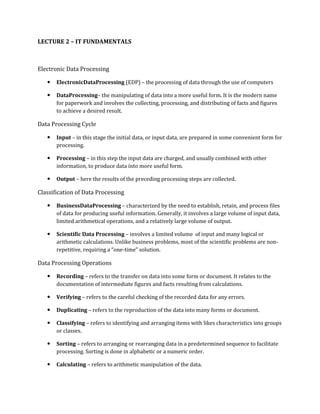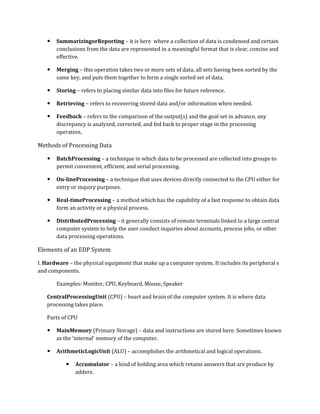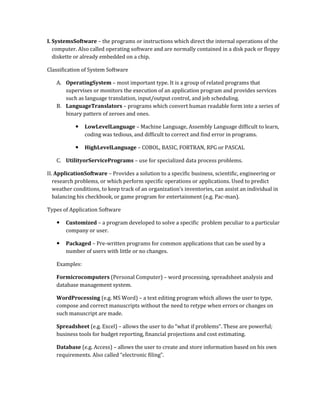The document discusses the fundamentals of information technology, including electronic data processing, the data processing cycle of input, processing, and output, and different types of data processing like business and scientific. It also describes common data processing operations, methods of processing data, the hardware and software elements of an IT system, and different types of people involved in working with computers.





